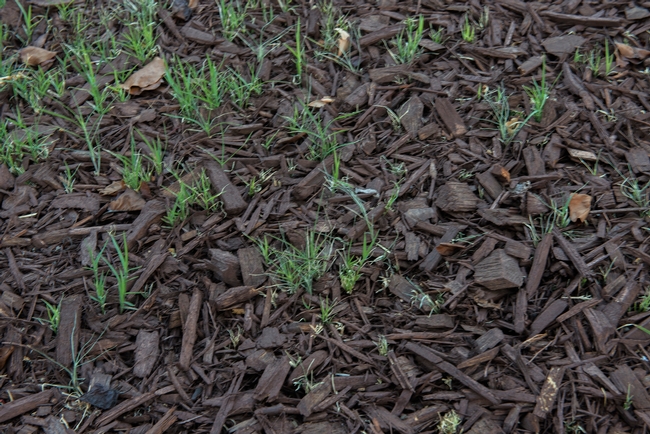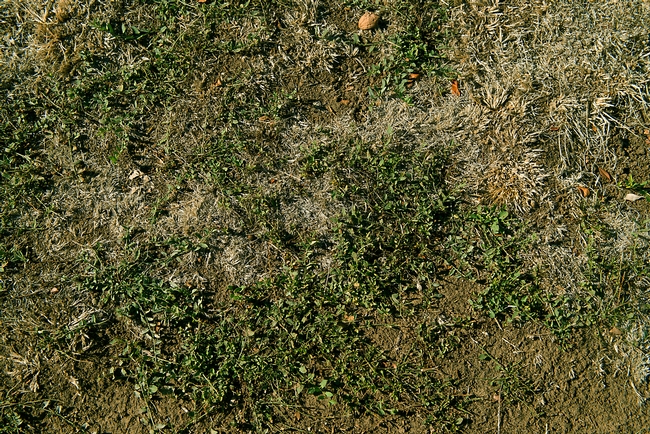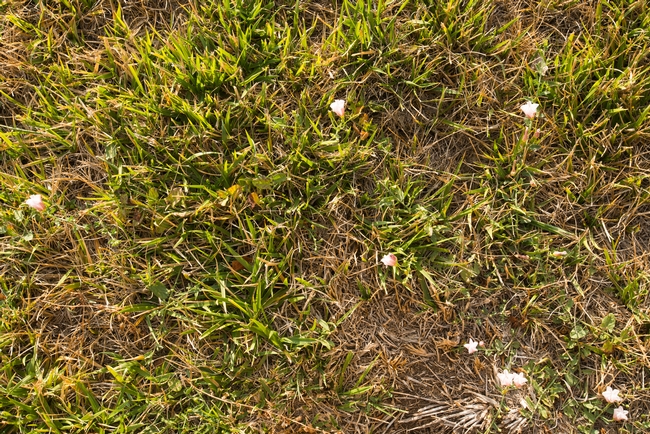Do weed populations change during a drought? Does drought favor certain species? Does annual or perennial species matter? During this four year period of drought in California, have they changed? What are the populations of annual and perennial weeds? With a limiting growth factor, in this case water, weeds become more prominent and which of them will or could disappear?
Roundup spray, mulch and regrowth of Bermuda
Bermudagrass tolerance to drought
- when the homeowner cut off watering of the turf, the grass died in spots and left a relatively bare ground of dead vegetation
- the turf was smothered with cardboard and mulch or chips (two locations)
- a vineyard area where winter weed species were controlled. Results are observations in the spring and summer of 2015.
Field bindweed tolerance to drought
Field bindweed in tall fescue lawn
Nutsedge and puncture vine, reduced moisture
Nutsedge in mulch over turf
In my three examples, plant management practices are having a distinct effect on subsequent species and growth in this drought environment. Mowing allows bermudagrass to seriously compete over annual species. It is apparent that under drought stress, seed head production of bermudagrass and flowering of field bindweed are common. There seems to be a proliferation of perennial species at the expense of most annuals, except deep rooted annuals and biennials (purple star thistle, prickly lettuce, knotweed).
Weed populations do change when drought stress occurs. This stress seems to favor perennial species over annual species. Depending upon the species present at the beginning of the drought, these perennial species are more tolerant than annuals and thus become a greater part of the landscape. Annual species will probably not decline in the area over time unless the drought continues for more years because of the seed banked in the soil.
Are we seeing a life-cycle shift during this long drought? Are there any places where annual weeds are becoming larger populations; with a reduction of perennials?






